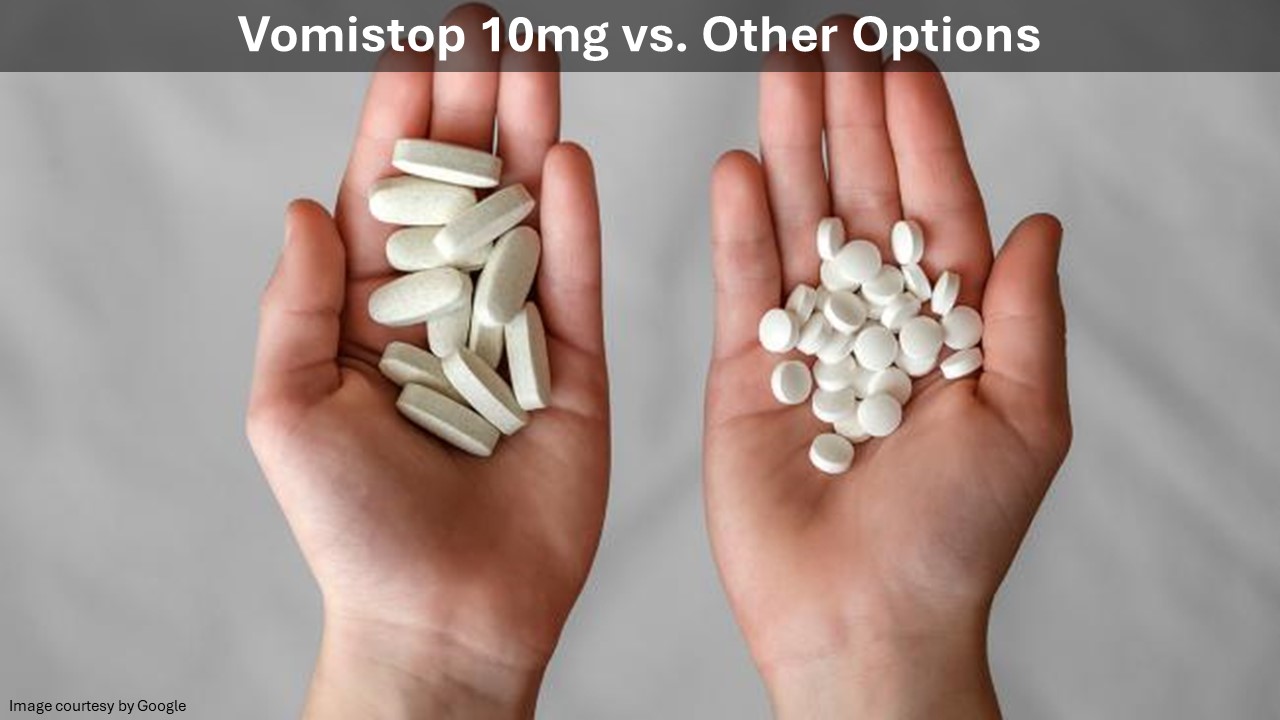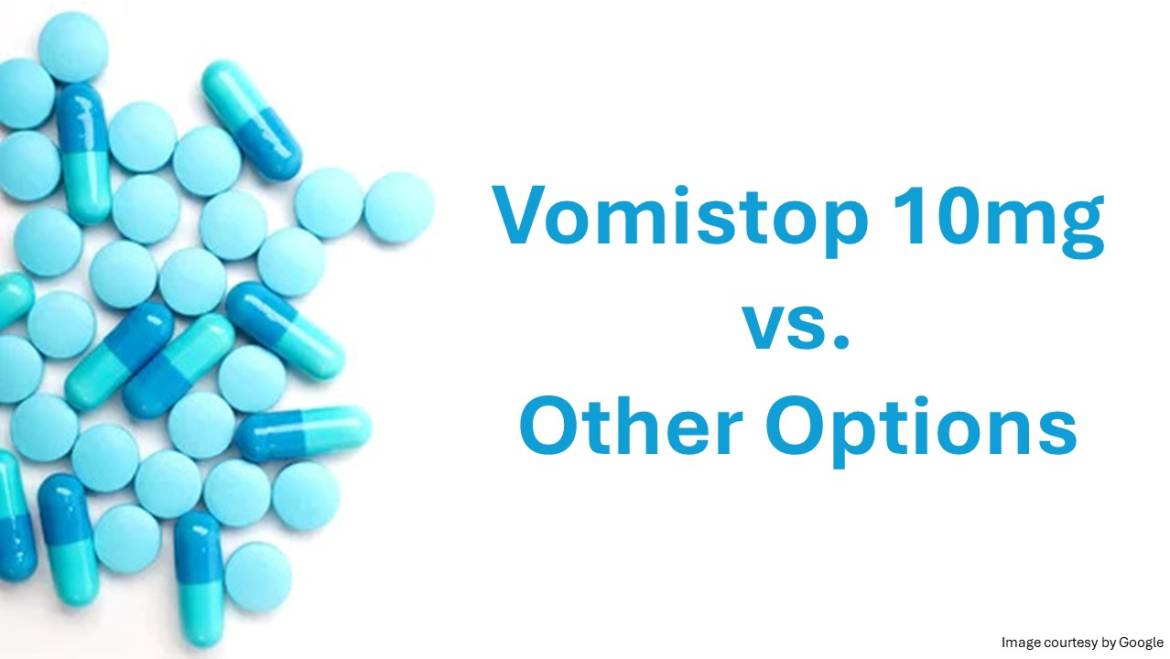Vomistop 10 mg is the antiemetic medicine drug domperidone. This article will provide information on Vomistop table composition, uses, dosage, and side effects.
About Vomistop
Vomistop 10 mg contains Domperidone, which is a dopamine receptor agonist, and prokinetic metoclopramide. It treats nausea and vomiting in adults and adolescents aged 12 years and older and weighing 25 kg or more. Vomistop tablet for traveling becomes a must-pick option to control nausea, vomiting, and motion sickness. It seems to work as well as metoclopramide for treating symptoms of gastroparesis. It also comes with fewer nerve and brain-associated adverse effects compared to metoclopramide. Please consult a healthcare provider to learn Vomistop tablet side effects.
Like metoclopramide, the drug restricts dopamine receptors in the brain, thereby affecting the control of nausea and vomiting in the gut to increase gastrointestinal motility.
Vomistop tablet uses is not recommended for more than a few days. The use of Domperidone is strictly regulated following a warning issued about the risk of cardiac side effects. This medicine should only be administered at the lowest effective dose for the shortest possible time.
Vomistop Alternatives
Antidopaminergic medicine is frequently prescribed for the treatment of nausea. However, Domperidone is ill-famed for its severe heart-related adverse effects. Metoclopramide has been recommended as a relatively safe alternative because it has long been considered to have fewer heart-related adverse effects. There are reports of older patients developing severe bradycardia and hypotension shortly after receiving metoclopramide. Cardiac adverse effects of metoclopramide in older adults are not frequently described in research reports, especially not in patients without a background of heart disorder. Researchers and health care providers recommend caution with intravenous administration of metoclopramide in older patients.
When to take Vomistop 10 mg
Vomistop tablets used for nausea are usually only prescribed once your healthcare provider is sure what is causing nausea (feeling of sickness). This is because, in many cases, if you treat the underlying cause of nausea, it will go away. For instance, if your nausea is caused by excessive usage of a particular medicine, your healthcare provider will reduce the dose, and your nausea will often resolve. If the cause of nausea is unknown, your healthcare provider may prescribe alternative medicine, but it is always better to know the cause so that the right precautions can be followed.
Taking Vomistop
Your healthcare specialist will decide the Vomistop tablet dosage and how long you must take this medication. Symptoms usually resolve within 2 to 4 days of Vomistop medicine. Do not take Vomistop tablets for longer than a week without consulting your healthcare provider. Swallow the pill whole with a glass full of water. Take the medication 15 to 30 minutes before a meal and avoid crushing or chewing it.
In adults and adolescents twelve years and older with a body weight of 25 kg or more, the recommended dose is one tablet taken up to three times a day, if possible, before meals. Avoid taking more than three tablets a day. This medication is not suitable for children under twelve years of age and older with a body weight of less than 35 kg.
Use of Vomistop tablet up to three times a day is recommended. The medication is not suitable for children under twelve years of age and older with a body weight of less than 35 kg. If you have kidney problems, your doctor may prescribe a lower dose.

Special patient groups
Parkinson’s disease on long-term treatment with Domperidone for relieving nausea and vomiting associated with apomorphine or L-dopa should remain on their usual dose. Seek medical help if needed or for new patients.
Patients suffering from gastroparesis whose symptoms persist can be managed with Domperidone. An antiemetic agent may be used for these patients to control any nausea and vomiting.
The use of Vomistop tablet 10 mg should be avoided wherever possible.
Contraindications
- People with conditions where the cardiac condition is or could be impaired.
- People with underlying cardiac disorders such as congestive heart failure.
- People getting other medications such as erythromycin, amiodarone, citalopram, haloperidol, itraconazole, diltiazem, verapamil, and fluconazole.
- People suffering from severe hepatic insufficiency.
The bottom line
The starting dosage of Domperidone (vomistop) for gastroparesis is 10 mg orally thrice daily. If needed, the dosage can be increased to 20 mg thrice daily if prescribed. There are currently no drugs in licensed antidopaminergic agents. Vomistop Domperidone tablet 10 mg and metoclopramide have been the most widely prescribed antiemetic drug. Metoclopramide received a warning regarding the risks of extrapyramidal side effects.
admin
Latest posts by admin (see all)
- What is Triluma Cream? Uses, Benefits, and How It Works for Skin - December 26, 2024
- What Causes Dark Spots? Understanding the Science of Hyperpigmentation and How Skin Lightening Products Help - December 26, 2024
- Tretinoin Gel vs. Cream: Which Formulation is Right for Your Skin? - December 20, 2024



